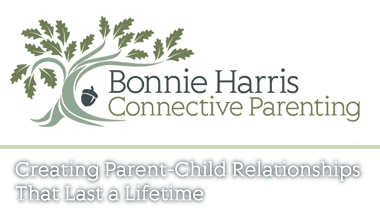As parents, our goal is to prepare our children for adult life, independence, and successful living. A key component of this is ensuring they have the best understanding of personal finance as possible. However, this can be a daunting task, especially if we, as parents, may not be modeling the best behaviors when it comes to our wallets. Here are some helpful ways to set an example and educate your children on the importance of understanding their finances.
Examine Your Own Relationship with Money through the Eyes of Your Children
 As we know, children mirror us, watching everything we do and imitating both our best and worst behaviors. Extensive research done on this topic shows that kids copy us all on their own, and that these behaviors become part of their personalities. This extends to watching parents and caregivers navigate their relationships with money. Think about how you act when you take your kids shopping.
As we know, children mirror us, watching everything we do and imitating both our best and worst behaviors. Extensive research done on this topic shows that kids copy us all on their own, and that these behaviors become part of their personalities. This extends to watching parents and caregivers navigate their relationships with money. Think about how you act when you take your kids shopping.
- Do you make expensive purchases to relieve stress? If so, your kids will likely follow suit, creating a pattern early on of emotional spending.
- Do family conversations about money always turn into an argument, or are they simply non-existent? This will teach your kids shame and secrecy. Arguing about money can trigger a stress response in children.
Putting down an impulse purchase with a shrug and leaving the store teaches your child that it’s normal to pass on spending if it’s not in the budget. Setting an example by making the discussion of finances comfortable and open will teach your kids to be at ease when planning financial decisions. Look inward and examine your own attitudes and habits surrounding money, and as you improve, your kids will begin to reflect those healthy habits.
 Starting a Comprehensive Conversation
Starting a Comprehensive Conversation
Though you may think your first-grader is years away from forming a relationship with money, research shows that many financial habits in children are solidified around the age of 7. This shows that it’s never too early to start educating your kids about this essential topic! However, parents can often be myopic in their approach, focusing more on reaching short-term purchase goals. Providing an allowance and teaching your kids to save for purchases is an important lesson. You can compound on this benefit by teaching aspects of a balanced financial life, such as budgeting, understanding credit, and investing. Extending the conversation and breaking it up into smaller pieces that your kids can digest will give them a much more well-rounded understanding of financial wellness.
 Budgeting (Ages 7-12)
Budgeting (Ages 7-12)
Budgeting can be a great place to start, especially since it’s a natural extension of the concept of saving and spending earned income. First, gather your information about how you spend money within your own family. You can use your take-home pay as a reference and explain to your kids that the government takes a portion of your income, and that when calculating how much money you have to spend, you must subtract taxes from that number.
Figuring out what you want to spend money on is the way to begin budgeting. Use a whiteboard or poster board and ask your kids to brainstorm what things you buy that you have to save money for. While they may need some guidance, they likely will understand that things like groceries, clothes, and gas cost money, since they often accompany you when these purchases are made. From there, you can add on other bills and utilities. This is a great time to explain “needs” and “wants” to your children. Also point out how each month it’s important to save for emergencies, as well as for fun purchases. Explain that it’s best to know what they’re going to spend money on before it’s even spent. While some of these ideas might seem to go over their heads, you’re setting up a strong framework for how they’ll approach budgeting in their adult years.
 Investing (Ages 12-18)
Investing (Ages 12-18)
Extending the budgeting talk by focusing on the concept of investing can be a great way to expand the learning process if you have older children or teens who can understand the more advanced math behind this concept. Additionally, it will help your kids reframe how they think of money and understand how to grow wealth. For young kids, you can simply explain that you set money aside to a special account that’ll grow over time.
For this more advanced lesson, using your retirement account can illustrate the real-world application of this process. Point out the portion of your budget spent on your retirement fund and show your kids the growth of your account over time. This helpful guide from the IRS breaks down each type of retirement account so you can easily reference your own.
Show them that each pay period you set aside money into your retirement account and let them see the charts to show how the value grows beyond what you initially set aside. Explain that within your account, you’ve purchased pieces of many companies. Over time, the value of these pieces will increase, though there may be ups and downs. Therefore, after many years, these slices will be able to be sold for more money than they were originally worth. Compare this with inflation, and explain that each year, their cash will decrease around 3% or more in value, making their money worth less and less over time. Contrasting these two concepts will teach your kids that it’s important to use their money wisely and grow it over time, rather than simply hoarding cash that loses value each year.
Credit (Ages 15-18)
Explaining credit can be a tricky conversation because many of us carry stress and shame around the concept of debt. However, it’s important not to let these factors affect your ability to have a frank and informative conversation with your kids about credit, especially before they leave home. Your credit score is composed of five factors, listed here from most to least impactful:
- Payment history
- Amounts owed
- Length of credit history
- New credit
- Variety of credit
The key takeaway from this should be that your credit score is a measure of how likely you are to pay back money you have borrowed.
 Using a concrete example is a great way to show how credit has affected your family in the real world. Since one’s home is generally the most expensive purchase they’ll ever make, using the purchase of your home is a great example of how credit can work to your advantage. However, if you don’t own a home, you can use the family car or another large purchase for this lesson.
Using a concrete example is a great way to show how credit has affected your family in the real world. Since one’s home is generally the most expensive purchase they’ll ever make, using the purchase of your home is a great example of how credit can work to your advantage. However, if you don’t own a home, you can use the family car or another large purchase for this lesson.
Explain to your kids what your finances were like when you bought your first home, and how this affected your credit score. Talk about how many credit cards you’ve had, what kind of debt you had at the time you bought your house, and what your credit score was. Knowing what credit score is needed to buy a house is a great point of reference, since it’ll cement that if they don’t manage their debt, they may not be able to make milestone purchases in the future when they’re independent adults. Additionally, you can show them how the same home will require lower payments and less interest if their credit score is excellent. Make sure they understand that paying off their credit cards each month, having variety in their lines of credit, and keeping accrued debt at a minimum will help keep their options open for the future.
All these suggestions can be built upon and worked into your family discussions about money. Modeling and teaching your kids these important lessons is like anything you teach your children, from riding a bike to sharing toys. You’re teaching them skills and concepts that’ll help them grow into mature, smart adults. Though it can be a stressful topic, removing the tendency to be avoidant about money and having an open dialogue with your kids will help to reduce the tension money can cause. They will surely thank you for it when they are adults making great, educated decisions, able to pass these skills down to the next generation.
Related Article







